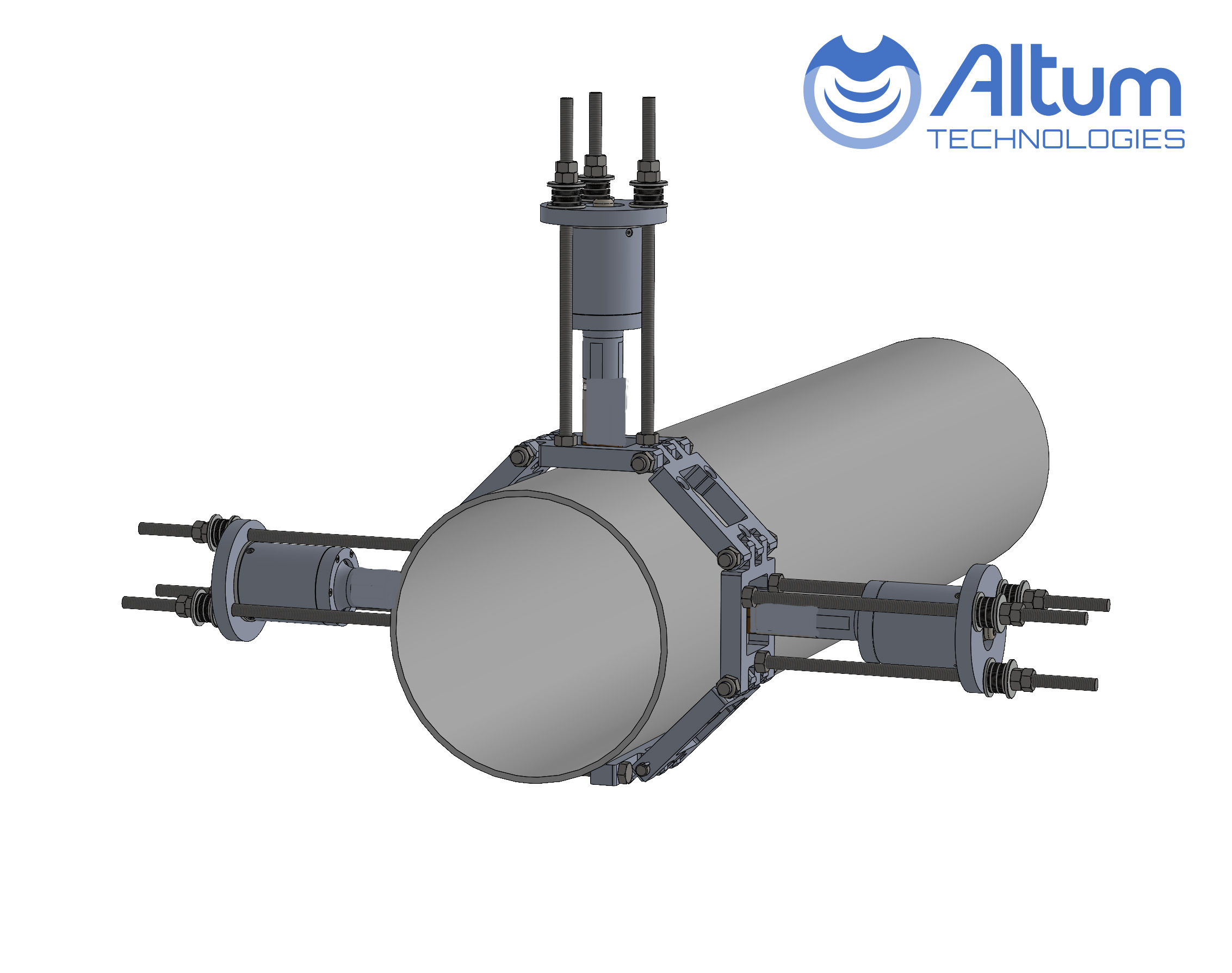Clean-in-Place (CIP) systems form an important part of modern equipment maintenance. This automated cleaning method has transformed how facilities maintain their processing equipment, especially in industries where contamination risks need to be minimized.
What is Clean-in-Place (CIP)?
Clean-in-Place, or just CIP, is an automated cleaning method used in industrial processing facilities to clean interior surfaces of equipment like pipes, evaporators or filters without disassembly. This approach allows cleaning while equipment remains in its original location. CIP eliminates the need for time-consuming dismantling and manual cleaning procedures.
Clean-in-Place (CIP) systems often use chemicals like caustic solutions, acids, and sanitizers to clean industrial equipment. Modern CIP methods can also include alternatives such as high-temperature water/steam, mechanical action through high-pressure sprays and turbulent flow, ultrasonic technology, electrolyzed water, UV light, and CO₂ cleaning. The specific approach depends on the industry requirements, contamination type, equipment materials, and environmental considerations.
CIP technology is popular in industries which have strict hygiene requirements, such as:
- Food and beverage production
- Pharmaceuticals
- Brewing and dairy processing
- Chemical manufacturing
- Cosmetics production
It is also used in other industries, such as energy generation and pulp and paper.
The CIP Process Steps
A typical cleaning-in-place method follows a process, which aims to ensure thorough cleaning without wasting resources.
- Pre-Rinse: Initial removal of loose soil and product residues using room temperature or warm water.
- Detergent Circulation: The system circulates alkaline or acidic cleaning solutions to remove protein-based soils, mineral deposits, and other contaminants.
- Intermediate Rinse: Detergent and dissolved soils are flushed away with water.
- Sanitization: Chemical sanitizers or hot water are used to eliminate remaining microorganisms.
- Final Rinse: Sanitizer residues are rinsed with water. This leaves the equipment ready for production.
- Verification: Quality control measures, such as different tests, are used to confirm that the cleaning was effective.
The CIP process is highly customizable. The parameters can be tailored to specific cleaning requirements, soil types, and equipment. Depending on the method used, the steps, such as the number of rinses needed, can vary. Thus, not all CIP methods offer the same benefits to the business; some require more effort and resources and have a greater environmental impact than others. Read more about CIP systems.
CIP Cleaning vs. Traditional Cleaning Methods
When comparing the cleaning-in-place method with traditional cleaning methods, such as manual scrubbing, high-pressure washing or boil-outs, we can find several important differences.
CIP
| Automated process requiring minimal human intervention |
| Consistent, repeatable results |
| Reduced exposure to chemicals for workers |
| Minimized production downtime |
| Lower water and chemical consumption |
| Reduced risk of equipment damage |
Manual Cleaning
| Labor-intensive with manual effort |
| Cleaning quality depends on operator |
| Higher chemical exposure risks |
| Production interruptions |
| Often requires more resources |
| Higher risk for component damage during disassembly |
What Are the Benefits of Implementing CIP Systems?
Benefits of CIP systems can typically include:
Enhanced Food (or Other Product) Safety and Quality: A standardized and tested CIP process ensures consistent cleaning results, which helps maintain product quality and consumer safety.
Operational Efficiency: Facilities can maximize production uptime when cleaning times and labor requirements are reduced. For example, our customer facility from Mitsubishi Paper was able to increase their uptime by 300 %, and a Nutrien facility was able to reduce their maintenance requirements by 75% by using our ultrasound CIP solution.
Resource Conservation: Modern CIP systems optimize water, energy, and chemical use with precise control systems, and some CIP systems don’t even require the use of chemicals or extra water. By using our ultrasound CIP system to prevent fouling from building up, our customer was able to lower their water use by 500 000 liters per year.
Compliance Assurance: Automated documentation of cleaning cycles helps facilities meet regulatory requirements and standards.
Extended Equipment Lifespan: CIP reduces wear and tear on process equipment, as it doesn’t require disassembly.
Challenges in CIP Implementation
While there are many benefits, implementing effective CIP cleaning does present certain challenges:
Initial Investment: The cost of installing CIP systems can be big, but the long-term ROI typically justifies this expense.
System Design: Effective CIP requires that the equipment has been designed to be easily cleaned, e.g., making sure of proper spray coverage, flow dynamics, and drainage. This does not apply to all CIP systems equally and depends on the chosen method. For example, Altum’s ultrasound does not require spray coverage.
Validation: To make sure that cleaning processes consistently reach all surfaces and effectively remove contaminants, facilities need to build proper validation protocols.
The Future of CIP Technology
Industries worldwide are prioritizing efficiency and sustainability, and CIP technology is also evolving accordingly. These future or current innovations in CIP technology include:
- Advanced sensors for real-time cleaning verification
- AI-based optimization of cleaning parameters
- Reduced environmental footprint through more efficient resource utilization
- Integration with broader facility management systems
Conclusion
Clean-in-Place systems are a clear advancement in industrial cleaning practices. This article has aimed to help you understand what CIP cleaning is and how proper CIP process steps can be implemented. With CIP, facilities can achieve clean equipment while improving operational efficiency and resource management. As technology continues to evolve, the capabilities and applications of CIP systems will only expand.
Want to learn more about using ultrasound as a CIP method? Contact our experts to learn more about how it could benefit your process.
You can also find answers to commonly asked questions here: https://altumtechnologies.com/frequently-asked-questions-about-altums-solution/
Don’t forget to follow us on LinkedIn to see our future insights and news.

